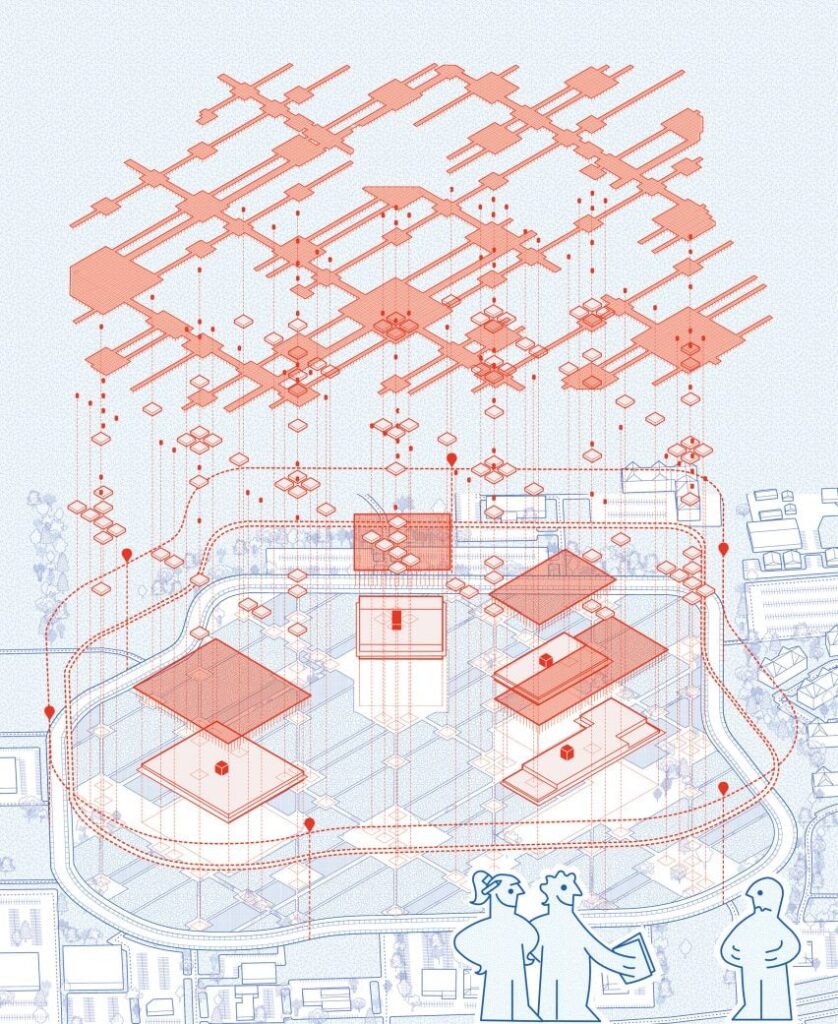Dezeen School Shows: a thesis proposing 3D-printed coastal interventions for the Antarctic Peninsula, which supports food networks for local animals is included in Dezeen’s latest school show by students at Tulane University.
Also included is a thesis that explores the possibilities of putting pavements, front gardens and driveways to better architectural use and a project that examines the possibilities of reusing former tuna fisheries in Sicily.
Institution: Tulane University
School: Tulane School of Architecture
Course: ARCH 5990/6990 – Thesis Studio
Tutors: Iñaki Alday, Liz Camuti, Ammar Eloueini, Margarita Jover, Byron Mouton, Carol Reese and Cordula Roser Gray
School statement:
“The Tulane School of Architecture in New Orleans generates and applies knowledge that addresses urgent challenges of humankind.
“We do this by educating committed professionals to creatively manage complexity and transform the world through the practices of architecture, urbanism and preservation.
“The five-year Bachelor of Architecture (BArch) and the graduate Master of Architecture (MArch) prepare students with advanced skills in the areas of history, theory, representation and technology.
“Our extensive network of alumni lead successful careers in various fields related to the built environment and design.
“The thesis projects presented below address a clear subject matter, identify actionable methods for working, and generate knowledge relative to their findings that ultimately contribute to architectural discourse.
“In the fall 2022 semester, students conducted research and processed work that led to designing a project according to crucial principles and parameters embedded within the discipline of architecture.
“The outcome of these activities is an architectural thesis – a competent, complex design proposal that contributes meaningfully to current and historic discussions in architecture and society – and it is presented in the spring 2023 semester.
“Throughout the process, each student was guided by at least one faculty thesis director.”
Out of Scale: Disrupting the Typology of the American Mall Standard of Walkability by Merrie Afseth and Connor Little
“In order to better integrate localised systems of metabolism within the built environment, our thesis proposes the readaptation of suburban American malls into solar energy hubs.
“A new model for redevelopment centres the production, distribution and storage of energy as the key driver for transformation.
“The introduction of autonomous solar energy infrastructure informs a field condition that serves to create a new landscape strategy.
“Through reframing the mall owner’s role to that of an energy provider, we can envision a future where malls become attractive not only for their retail potential, but also their role in fostering community resilience.”
Students: Merrie Afseth and Connor Little
Course: ARCH 5990 – Thesis
Tutors: Cordula Roser Gray, Ammar Eloueini, Margarita Jover and Liz Camuti
Emails: merrieafseth2018[at]gmail.com and connorlittle0714[at]gmail.com
Living In Dead Spaces: Mitigating the Housing Crisis through the Means of Adaptive Reuse by Alyssa Barber and Olivia Georgakopoulos
“In the San Francisco Bay Area there is a lack of housing and developable space but an abundance of underutilised structures.
“We propose that abandoned religious buildings are transformed into new pieces of social infrastructure.
“At three scales of intervention, these models demonstrate how abandoned churches can be adapted depending on contextual and financial considerations as a means to mitigate the housing crisis.
“After conducting an analysis of abandoned buildings in the Bay Area, we found that churches were the most common typology with the most similarities, making them suitable to implement a housing model.
“All three interventions weave the new and the old in various ways to revitalise the original building with a new programme.”
Students: Alyssa Barber and Olivia Georgakopoulos
Course: ARCH 5990 – Thesis
Tutors: Cordula Roser Gray and Ammar Eloueini
Emails: alyssakbarber[at]gmail.com and ogeorgakopoulos[at]tulane.edu

Amending Dead Spaces: Community Vitalisation through the Public-Private Intermediary by Andreea Dan and Tess Temple
“This thesis explores new urbanism tactics through the revitalisation of a pre-existing low-rise community in South Los Angeles, investigating the topic of American suburban-urban domesticity as a whole and expand results to other areas that face these same problems of contemporary ‘dead space’.
“The primary proposal is to occupy the current street – by eliminating the access of the car, a barrier between the front of homes is eliminated, leaving space for architectural intervention that engages residents and introduces new revenue into a historically neglected community.
“The thesis reconceptualises these ‘dead spaces’ that have often formed in single-family urban settings where the front yard, driveway, sidewalk and street lie.
“In the particular instance of the four-block site chosen for this thesis, a repeated urban seam is highly visible. It includes single-family residences aligned to face a low-traffic street, with underutilised and fenced-in front yards and sidewalks, as well as long driveways often extending to garages in the backyards.”
Students: Andreea Dan and Tess Temple
Course: ARCH 5990 – Thesis
Tutors: Cordula Roser Gray and Ammar Eloueini
Emails: adan[at]tulane.edu and ttemple[at]tulane.edu
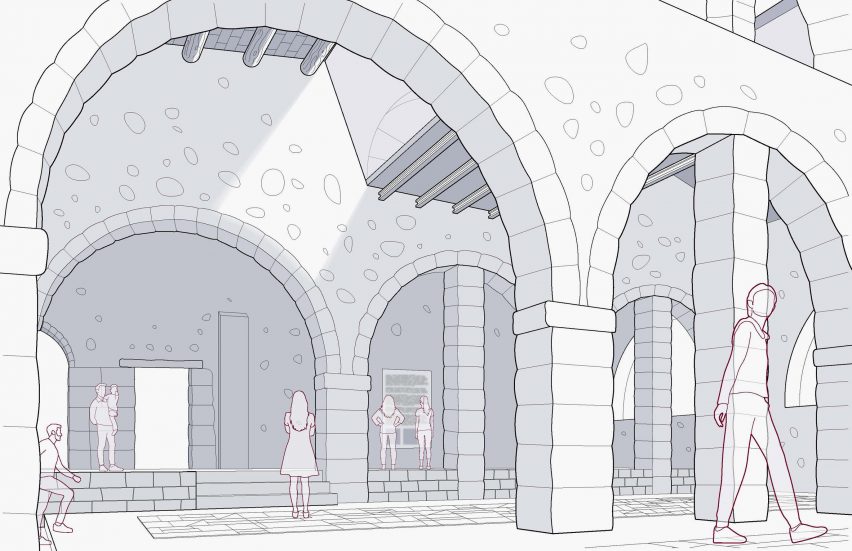
Mapping Memory: Preserving and Restoring the Landscape of Sicily’s Tuna Fisheries by Giuliana Vaccarino Gearty
“This thesis project examines the reuse of tuna fisheries in Sicily – many of these 17th to 19th century buildings, called ‘tonnare’, have been converted from abandoned factories into commercial centres, museums and resorts.
“Focusing on one case study, I offer an expansive, landscape- and community-oriented solution to reactivating Sicily’s tonnare.
“Rather than transform the site into another luxury property, I advocate for reuse with an emphasis on history, the landscape and ecological regeneration.
“I propose preserving and reactivating the tonnare through minimal programming and expanding the site to accommodate additional uses.
“New paths connect beachgoers to the water and a small ‘village’ of rental apartments allows visitors to linger, and a phased planting strategy will repopulate the site with native vegetation.”
Student: Giuliana Vaccarino Gearty
Course: ARCH 6990 – Thesis
Tutors: Carol Reese and Iñaki Alday
Email: giuliana.vaccarino[at]gmail.com
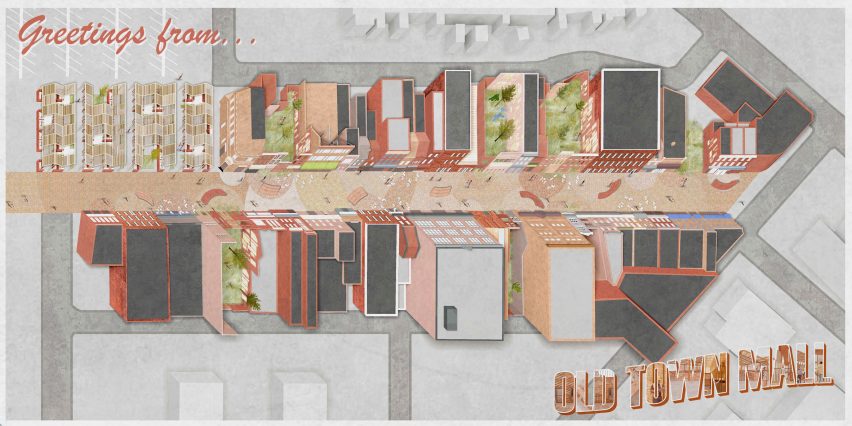
Immaterial: New Sensations from Old Materials by Alex Langley and Sam Spencer
“The standardisation of building materials has caused them to become more ubiquitous and less precious than they once were – there is no formal difference between a new brick and an old one.
“Therefore, it is easy to imagine demolishing what remains of buildings in poor condition and putting new brick buildings in its place.
“But this formal assessment does not take into account immaterial qualities embedded in the materials. As waste from construction and demolition increases (and the abandonment of Baltimore’s historic row houses increases) the need to rethink traditional views of waste becomes more urgent.
“Through radical material reuse, architecture has the ability to reposition perceptions of value, by bringing out latent immaterial qualities within used materials.
“The fate of construction materials has been erroneously tied to that of the building – we must sacrifice certain buildings in order to reuse their materials thereby preserving the immaterial qualities within the materials.”
Students: Alex Langley and Sam Spencer
Course: ARCH 5990 – Thesis
Tutors: Cordula Roser Gray and Ammar Eloueini
Emails: alangley[at]tulane.edu and samuelbspencer99[at]gmail.com
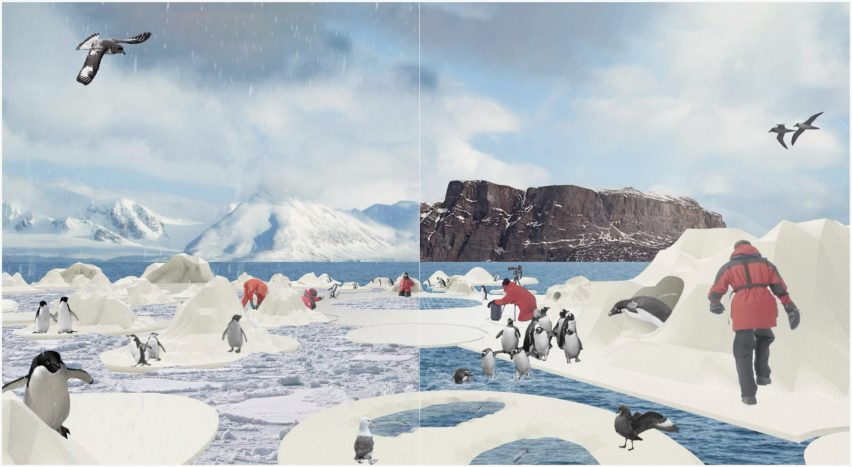
Symbiosis On ‘Ice’: A Replicable Model for Antarctic Preservation by Seth Laskin
“The Antarctic Peninsula, which extends from the continent towards South America, is one of the most rapidly warming regions on Earth and is the most significant location for climate research in the world.
“The region has experienced significant sea ice loss in recent decades, which negatively affects the local species – as sea ice disappears, the delicate balance of the food chain is disrupted, leading to declines in animal populations and biodiversity.
“This thesis proposes 3D-printed coastal interventions that invigorate local food networks and become extensions of the natural landscape, while integrating into the context of environmental research in the region.
“This can be accomplished through the implementation of research pods that are equipped with 3D printing equipment. The result is a self-expanding network that highlights a symbiotic relationship between human and environment.”
Student: Seth Laskin
Course: ARCH 5990 – Thesis
Tutors: Cordula Roser Gray [at] Ammar Eloueini
Email: slaskin[at]tulane.edu
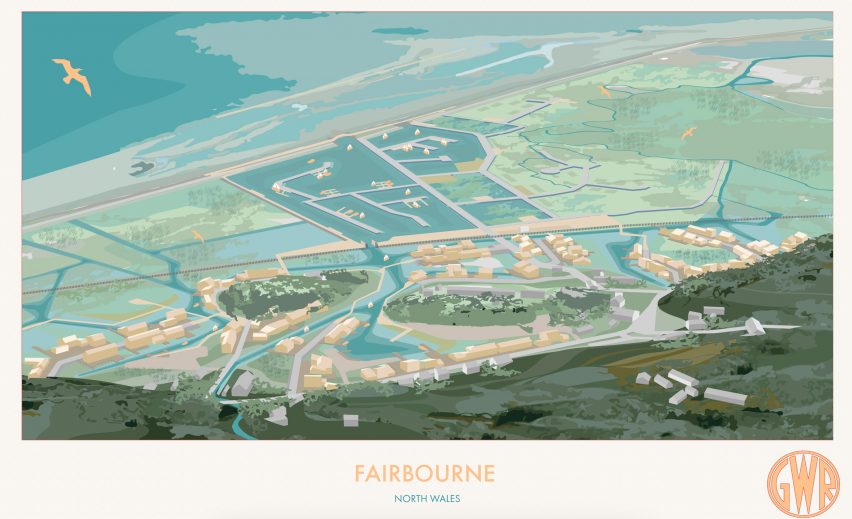
Beyond Retreat: Realigning the Welsch Coast for Resilient Inhabitation by Megan Spoor
“The Welsh village of Fairbourne is the first community in the UK to face decommissioning due to sea level rise.
“Outlined for Managed Realignment by the UK’s Shoreline Management Plan, there remains no strategy for how, or where, the village relocates, coupled with a strong desire by those affected to remain in place.
“This creates an opportunity to establish new approaches to coastal occupation that have the capacity to operate in future conditions of uncertainty and support the continued habitation of Wales’ coastline.
“‘Beyond Retreat’ presents an alternative settlement strategy for Fairbourne, that would enable the community to prepare for (and adapt to) the impacts of sea level rise, whilst minimising community displacement, restoring coastal ecosystems and regenerating local tourism.”
Student: Megan Spoor
Course: ARCH 6990 – Thesis
Tutors: Iñaki Alday and Liz Camuti
Emails: megan.spoor[at]gmail.com
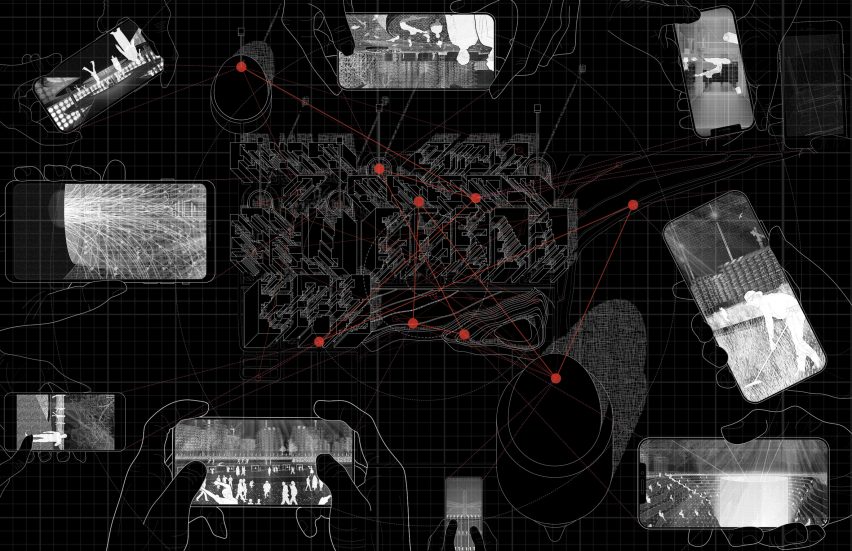
Lived Cyberspace: A Rehabilitation Center for Digital Addiction by Tiger Thepkanjana
“Surveillance, voyeurism and exhibitionism has had a long history. Today, there is the addition of the media as the main means to which we consume information.
“From this condition, physical spaces have been collapsed into what is inside the screen, all other spaces left unimportant.
“We all are voluntarily submitting ourselves into a modern digital panopticon, limiting our perception of physical space to the four corners of the screen.
“This thesis investigates speculative means to reflect upon this current state of society, establishing changing relationships between architecture and technological advancements.
“By translating virtual spaces into architecture and the landscape, this thesis attempts to show – through an architectural narrative – how the media have affected our perception of physical spaces, along with dystopian methods to rehabilitate and remediate.”
Student: Tiger Thepkanjana
Course: ARCH 5990 – Thesis
Tutors: Cordula Roser Gray and Ammar Eloueini
Email: tigerttz2000[at]gmail.com
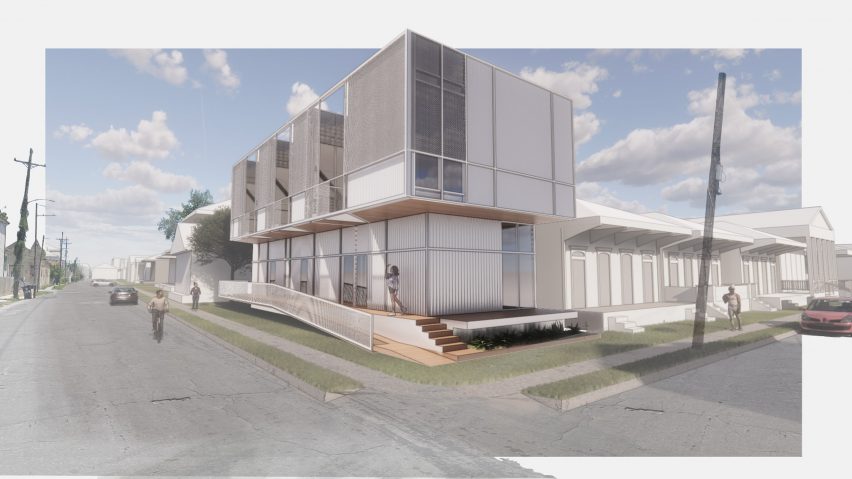
Small, Multifamily, Affordable: Affordable Fourplex Design and Development in New Orleans by Daniel Tighe
“New Orleans faces a critical shortage of affordable housing. To address it, the city updated the comprehensive zoning ordinance to allow fourplexes in historic residential districts where a maximum of two units were previously allowed.
“The only condition is that at least one of the four units must be rented at a rate affordable to a household making 70 per cent of the area’s median income.
“While this change is significant, other barriers exist – one year after the zoning change, not a single fourplex was built. While market-rate production of fourplexes may not be feasible, non-profit entities may offer a solution.
“Due to Louisiana’s unique land tax regulations a disproportionate amount of vacant land is owned by non-profit entities.
“This thesis explores opportunities for building affordable fourplexes on vacant land already owned by local nonprofits and faith-based institutions to address the shortage of affordable housing in New Orleans.
“The design proposal seeks to create a system for designing fourplexes that can easily be adapted to most standard lots in the city.”
Student: Daniel Tighe
Course: ARCH 6990 – Thesis
Tutor: Byron Mouton
Email: dtighe[at]tulane.edu
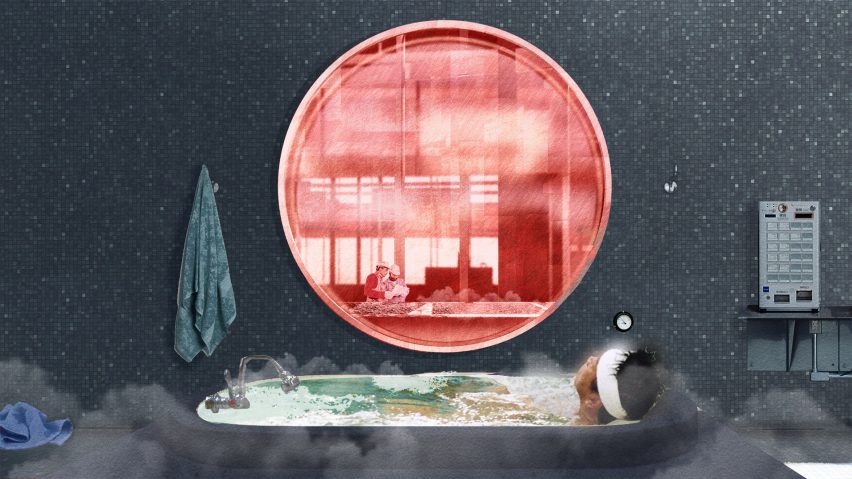
Industrial Interface: The Future of Infrastructure in the Fourth Industrial Revolution by Leah Bohatch and Camille Kreisel
“Wastewater treatment is currently an isolated system despite its importance in serving civilians, creating a linear relationship that wastes a limited resource while harming the health of its source: the body.
“A micro WWTP in Miami is proposed to run in a cycle of water treatment and reclamation that supports the heat-stricken city through the reprogramming of a cooling aquatic centre to act as an example for future plants.
“This new interface is represented in a ribboning red path of circulation that fluctuates between snaking around mechanical systems or inhabiting the mechanical space as a volume that enables the user to experience the treatment cycle.
“A plaza utilises a gradient strategy to enhance water runoff, merging the mechanical and landscape.”
Students: Leah Bohatch and Camille Kreisel
Course: ARCH 5990 – Thesis
Tutors: Cordula Roser Gray and Ammar Eloueini
Emails: lbohatch[at]tulane.edu and ckreisel[at]tulane.edu
Partnership content
This school show is a partnership between Dezeen and Tulane University. Find out more about Dezeen partnership content here.

